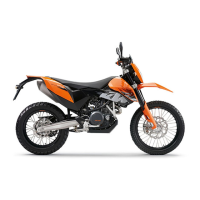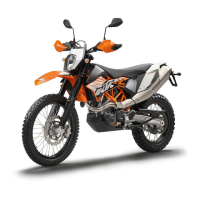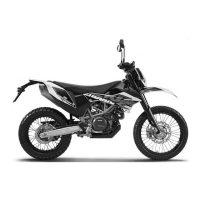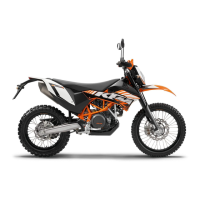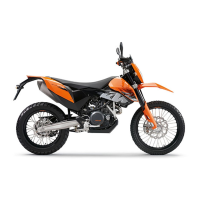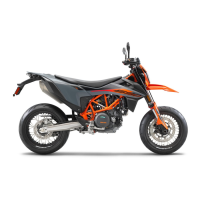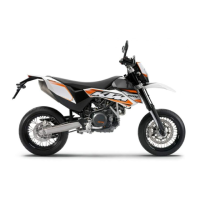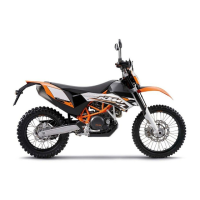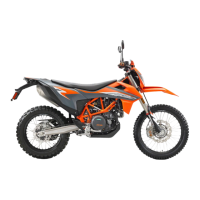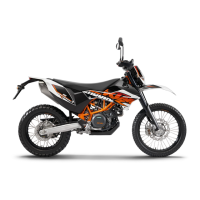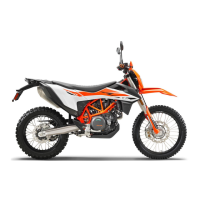CLEANING/PROTECTIVE TREATMENT 184
33.1Cleaning the motorcycle
Note
Material damage Damage and destruction of components by high-pressure cleaning equipment.
– Never clean the vehicle with high-pressure cleaning equipment or a strong water-jet. The excessive pressure can penetrate electri-
cal components, socket connects, throttle cables, and bearings, etc., and can damage or destroy these parts.
Warning
Environmental hazard Hazardous substances cause environmental damage.
– Oil, grease, filters, fuel, cleaners, brake fluid, etc., should be disposed of as stipulated in applicable regulations.
Info
If you clean the motorcycle regularly, its value and appearance will be maintained over a long period.
Avoid direct sunshine on the motorcycle during cleaning.
– Seal the exhaust system to keep water out.
– First remove coarse dirt particles with a gentle spray of water.
– Spray very dirty areas with a normal motorcycle cleaner and then clean with a brush.
Motorcycle cleaner ( p. 211)
Info
Clean the vehicle using a soft sponge and warm water containing normal motorcycle cleaner.
If the vehicle was operated in road salt, clean it with cold water. Warm water enhances the corrosive effects of salt.
– After the motorcycle has been thoroughly cleaned with a gentle spray of water, it should be dried with compressed air and a cloth.
Warning
Danger of accidents Reduced braking efficiency due to wet or dirty brakes.
– Clean or dry dirty or wet brakes by riding and braking gently.
– After cleaning, ride the vehicle a short distance until the engine is warm, applying the brakes occasionally.
Info
The heat produced causes water at inaccessible locations in the engine and the brakes to evaporate.
– Push back the protection covers of the handlebar controls to allow any water that has penetrated to evaporate.
– After the motorcycle has cooled off, oil or grease all moving parts and bearings.
– Clean the chain. ( p. 69)
– Treat bare metal parts (except for brake discs and exhaust system) with anti-corrosion materials.
Cleaning and preserving materials for metal, rubber and plastic ( p. 210)
– Treat all painted parts with a mild paint polish.
High-luster polish for paint ( p. 210)
– Treat all plastic parts and powder-coated parts with a mild cleaning and care agent.
Paint cleaner and polish for high-gloss and matte finishes, bare metal and plastic surfaces ( p. 211)
– To prevent electrical problems, treat electric contacts and switches with contact spray.
Contact spray ( p. 210)
– Oil the ignition/steering lock.
Universal oil spray ( p. 211)
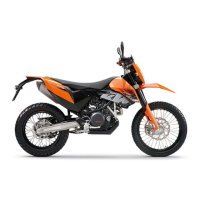
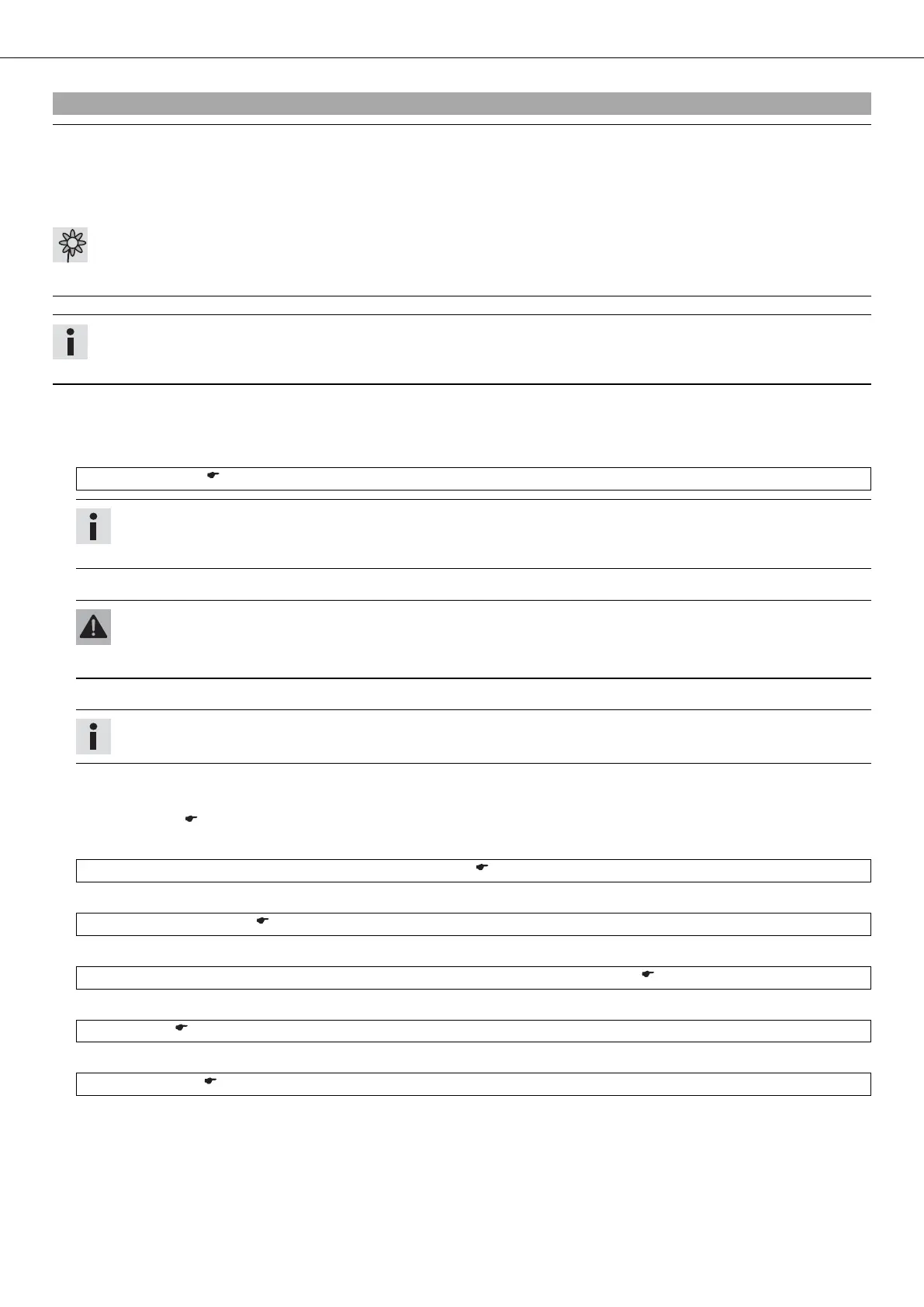